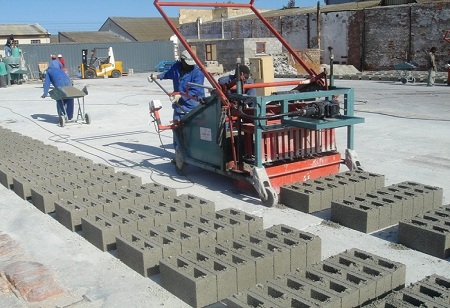As the
construction industry is transforming into a technology driven sector, the materials and equipment used in it are also changing with time. For instance,
concrete bricks and blocks are being made with new features that make them lightweight and stronger while causing lesser pollution. Let us look at the brick and block manufacturing industry in detail with its current trends, challenges and future technological trends.
The COVID-19 pandemic has restricted the growth of the industry, manifesting patterns like capex restraint and supply chain concerns at each level. However, in spite of all these factors, there are some trends that will continue to persist.
India imports about 14.63% of construction materials from China, with a further 6.30% coming from the US and 5.56% from Saudi Arabia, according to a report from Surface Reporter. Many suppliers like Malaysia, Italy, UK, Belgium, Germany, France, and Singapore have been dealt a gigantic blow from COVID-19.
Despite the fact that India is reliant only on a few nations, the worldwide effect of the corona emergency makes it stay away from the structure materials production network. Undergoing an unanticipated contraction of 50.3%, the structure material industry is projected to move at almost 15% this year.
The Indian development industry is intensely dependent on China for materials. As indicated by the information given by the Ministry of Commerce and Industry, between March 2019 and February 2020, India's commodity import bill from China was $49 billion. In the same period, China represented 11.8% of India's absolute imports.
Lightweight concrete slabs
Lightweight aggregates utilized in underlying lightweight concrete are normally expanded shale, mud or record materials that have been terminated in a revolving furnace to build up a permeable design. Different items, for example, air-cooled blast furnace slag is additionally utilized.
“As real estate developers push for cost rationalisation, construction companies will in turn focus on modular designs and prefabricated structures – which make construction appear more like a factory assembly line than an artisanal workshop,” writes Paul Wallett, Regional Director, Middle East and India, Trimble Solutions in an article for RoofandFloor.
There are different classes of non-primary LWC with lower thickness made with other total materials and higher air voids in the concrete glue network, for example, in cell concrete.
Aerated Concrete
Aerated concrete has the most reduced thickness, heat conductivity and strength. Like wood it is to be cut, screwed and nailed, however these are non-flammable. For works in the current situation, the standard techniques for air circulation are by blending in settled froth or by whipping air in with the guide of an air entraining agent.
The precast items are normally made by the expansion of about 0.2 percent aluminium powder to the blend which responds with basic substances in the fastener framing hydrogen bubbles. Air-relieved aerated through concrete is utilized where little strength is required for example rooftop tirades and line slacking.
Original capacity advancement relies on the response of lime with the siliceous totals,
